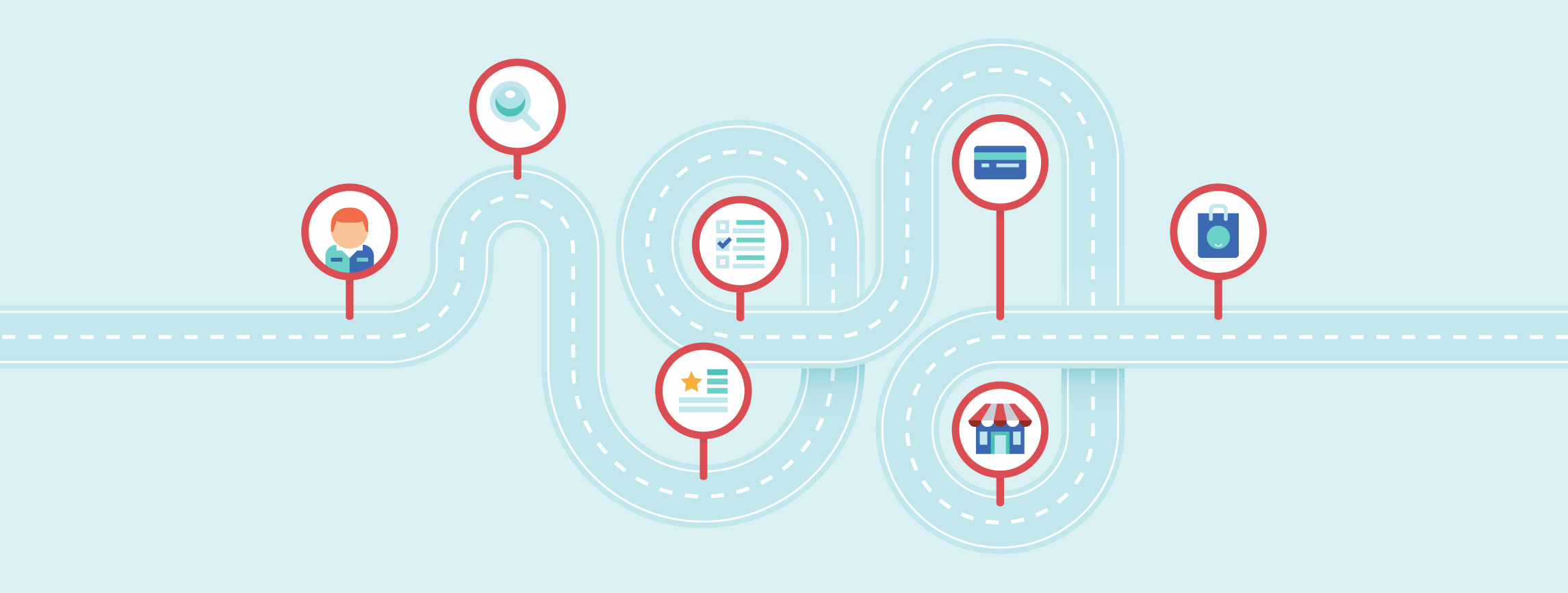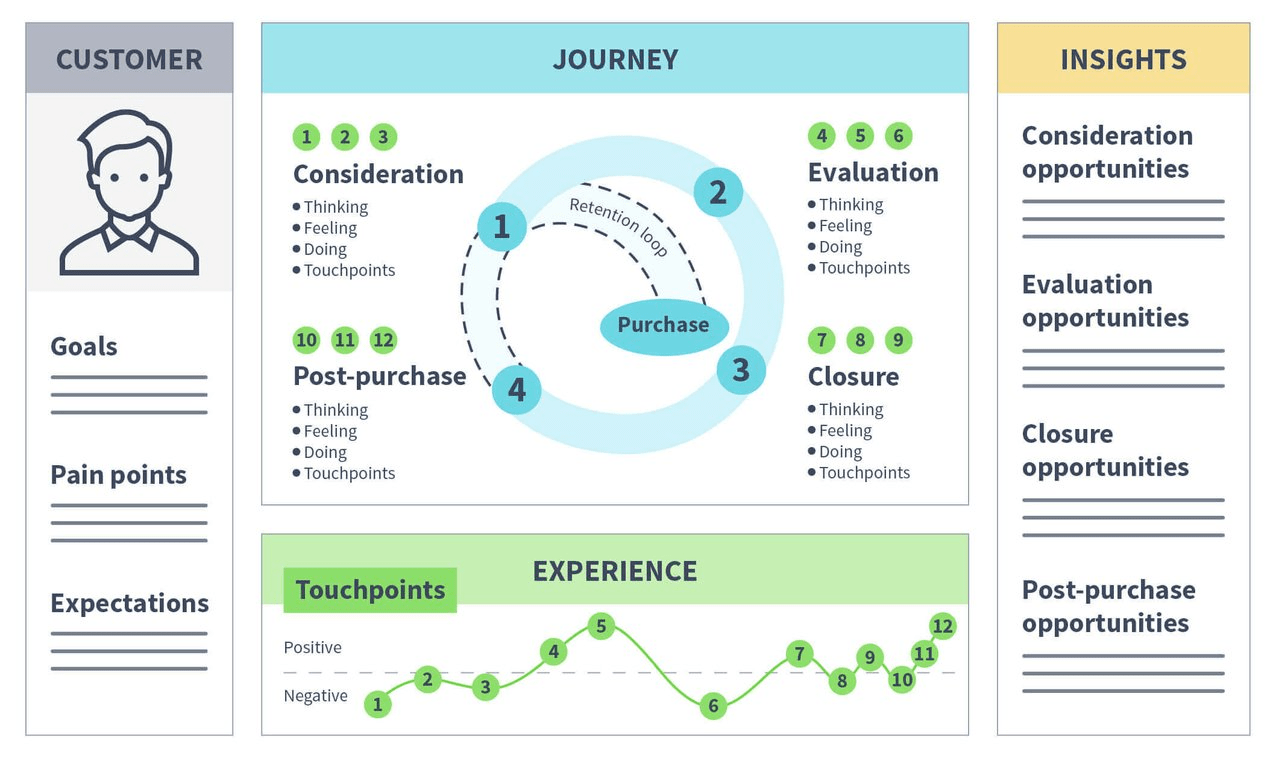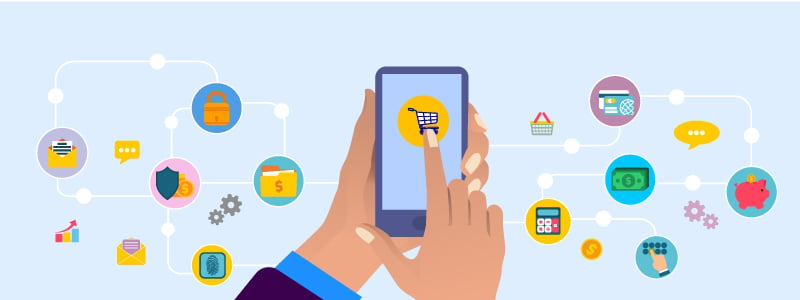How to Create a Customer Journey Map
Research shows that the global online cart abandonment rate is 70.19%! Such a rate should make you wonder: why are so many potential customers abandoning the purchase process when they are about to complete it? That is where a customer journey map comes in.
.png)
What are Customer Journey Maps?
Customer journey maps are visual representations of typical customers’ experiences with your organization that incorporate the customer touchpoints as they go through the various buyer’s journey phases.
Visual representations of the typical customers' journeys will enable you to understand better their needs and any obstacles they face during the purchase process. Because of this, your business should learn about the various customer journey phases and how to create the map!

The 3 Stages of a Customer Journey
Awareness Stage
Typical customers start the customer journey by becoming aware of a problem that needs a solution, so they begin to research about it.
In this stage, focus on providing educational content about your brand, SEO, social media engagement, analytics and track (etc). This is oftentimes where potential customers will click your "About Us" page.
Consideration Stage
Once customers understand their problems and potential solutions better, they move to the consideration stage where they begin to compare different brand offerings.
At this stage, Your organization's touchpoints should focus on product marketing materials, such as product comparison guides and whitepapers.
Decision Stage
Customers have a concrete idea of what they want by the decision stage and are looking for the solution that best suits them.
Provide high-quality content like free video demos, clear pricing pages, and attractive promotional offers.
It is vital to understand that a customer's journey doesn't end when they purchase your product! Generally, your chances of selling to a new customer stand at 5 to 20 percent. Building long-lasting, trusting relationships with clients is where the real success begins.
How to Create a Customer Journey Map

Utilize Customer Journey Map Templates
HubSpot offers several free templates you can use to flesh out your customer’s journey and experiences concerning your brand. Templates can also make it easier for your business to identify your buyer personas.
Create Your Buyer Personas
Your first order of business is to know your customer.
Using your research and data from interviews, CRM insights, and surveys, you can create a representation of your ideal customer.
You can learn when, how , and why they began to interact with your brand. For example, you could determine whether they accessed your brand first via social media or referrals.
If you need help figuring out where to start, HubSpot offers free buyer persona templates you can use to segment your audience and refine your marketing.
Specify Your Mapping Goals
Start by writing down your customer journey mapping goals. Who is your target customer? What kind of experience are you targeting? And why do you want to map their journey?
Once you have buyer personas, it is easier to be specific about the objectives that you want to achieve based on your ideal buyer's goals. For example, if your target customers thought about buying from you and then changed their minds later, your customer journey map could aim to find out why.
Determine Your Point of Focus
It is challenging to track all your buyer persona journeys simultaneously.
You can succeed better if you focus on one persona and a specific customer experience, especially if it’s your first time doing so. For example, you can focus on new customers and their interaction with your sales representatives on the path toward purchasing from you for the first time.
Outline Your Touchpoints
Are you aware of each point at which your buyers interact with your brand? It could help if you listed them, as well as other touchpoints you think your employees might have missed.
Once you have a complete list, note the customer's actions at each touchpoint. For example, when your customer contacts your customer support, do they first read through the knowledge base resources or call? When you interact with them, do you use chatbots or direct them to a real-time customer care center to solve their problems?
Once you have a clear picture of your touchpoints, you need to determine whether your buyers interact with each designated touchpoint. If they are using fewer than the desired steps to interact with your brand, it could be because you have fewer or more touch points than you should have, thus turning them away too quickly or due to many complications.

Identify the Customer's State of Mind
What is the reason behind your customer's behavior? You should try and understand your client's state of mind at each touchpoint. Are they excited that their problems are about to end? Do they feel agitated by the way your representatives handled them?
Making an educated guess about your customer's state of mind is only sometimes reliable. You should implement user testing and pay attention to customer feedback offered in real-time or via reviews and sales and customer representatives.
Identify Where to Improve
First, take stock of your existing customer experience resources and identify what needs to be added.
With the help of all other customer experience stakeholders and the insights you have obtained, you can implement the relevant improvement strategies. You can always ethically track what your competition is doing to understand what to do for your organization.
Creating a customer journey map doesn’t have to be hard. All you need is to use good templates to get started and luckily HubSpot has various templates!

Receive Pearagon's Newsletter

